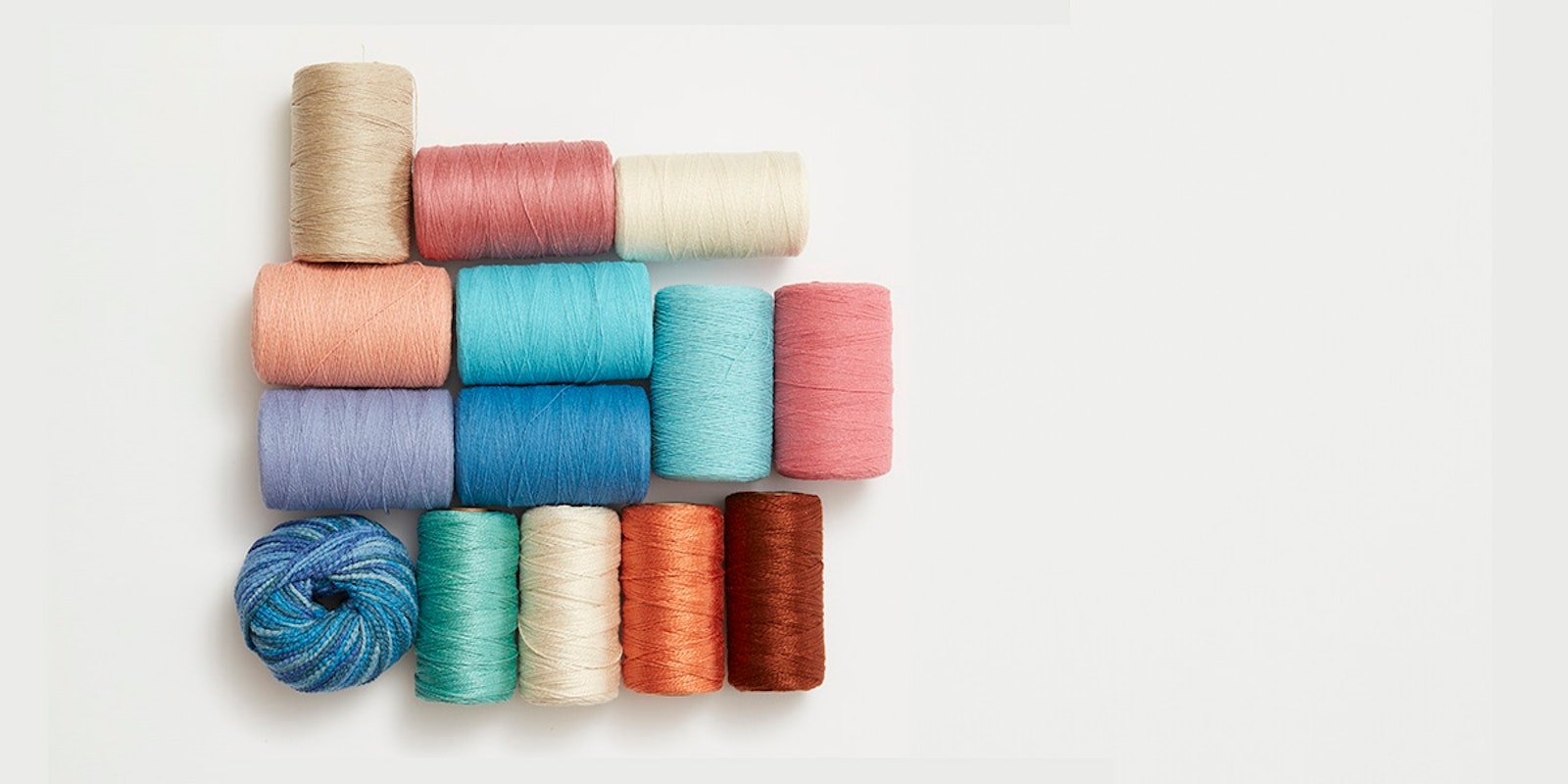Weavers generally agree that we all have enough yarn in our stashes to last us for the next fifty years. What if we wove only what we already have? That thought raises a sobering question: What would we do when we need a bit of fiber-y retail therapy?
Here’s a better idea. Plan some projects to creatively use stash, making room on your shelves for some of the yarns you’re dreaming of. To help you out, we’re offering a Stashbuster Pattern Pack for Weavers.
About the Stashbuster Pattern Pack
The five four-shaft projects that are included use yarns that are common in weavers’ stashes:
8/4 carpet warp
ADVERTISEMENT8/2 cotton
Tencel
22/2 cottolin
Worsted-weight wool
Get a closer look! Click any image in the gallery to open it in full-screen mode.
If the colors in your stash don’t match what you see here, have no worries—these projects can be beautifully woven in different colorways.
About the Projects
Huck Lace and Tencel Scarf by Kristen Kelley. This is a great beginner’s project. Kristen used one color of Tencel for both warp and weft and designed the huck lace detail to run the length of the scarf. Pick a color of Tencel from your stash that you love and start weaving your own version. You’ll need about 1,200 yards (less than half a pound) of 8/2 Tencel. You can also make it your own by interspersing areas of huck lace with areas of plain weave. (Note: In the WIF, the area of treadling in a different color of green denotes the huck lace repeat area.)
Elegant Gamp Lap Robe by Suzie Liles. Gamps are a great way to study weave structures and color interactions—you’ll be amazed at what you’ll learn about twills and color. Suzie Liles wove her version using bronze and violet Harrisville Highland wool, but you can use any two colors that you like. Or what if you used different colors for each threading block, and crossed them with the same or different colors in the treadling blocks? If you don’t have Highland, other worsted-weight wools would also work, as would Harrisville Shetland doubled. If you substitute yarn, sample first to be sure about the sett. Wind some color wraps to get started. You’ll be amazed at what you’ll learn about twills and color. (Note: The WIF does not show floating selvedges.)
Ragtime Remix Placemats by Carol Reinhold. Lots of us have carpet warp in our stash, and many of us also have a stash of cotton fabrics we don’t know what to do with. Here’s the basic recipe for using both. Carol’s method of blending the fabric colors in the weft for smooth transitions is worth studying and then applying to your own stash. You could even expand the threading and warp length to weave rag rugs; just be sure you either add wider headers for hemming or enough unwoven warp for twisting fringe.
Finnish Lace Dinner Napkins by Gayle Pace. Gayle’s napkins are lovely in their simplicity and charm. With three colors of cottolin from your stash, you can weave six napkins that match your dinner table and wow your guests. For the main color, you’ll need about half of a mini cone (which holds about 1,700 yards) and for the other two colors, much less. Color wraps will help you get started. Would you rather weave three towels? Treadle 20 repeats for each (rather than 10), and skip the side hems. And if you weave the first and last repeats in the edge color, you can have borders on all four sides.
Towels in a Modern Arrangement by Linda Gettmann. If you’ve been weaving a while, you probably have leftover 8/2 cotton in lots of colors. Pick two neutrals for your warp that look good together, and then start experimenting with pairs of colors for your weft. Linda wove six towels, choosing weft pairs that were close to each other on the color wheel (such as burgundy and red, or two shades of green). For tabby, you can use 20/2 cotton in similar colors, or raid your sewing thread stash.
Get the Collection
If you’re a beginning weaver, trying these patterns and applying some of the tips noted above will be a great first step in learning to design your own projects.
If you’re ready to hone your design skills, the collection includes downloadable WIFs for each project—so you can play with them on-screen before you put your new versions on the loom.
Click to view the Stashbuster Pattern Pack for Weavers.
Published Jan. 15, 2019; updated Oct. 31, 2025







